- Humanities ›

'Whack at Your Reader at Once': Eight Great Opening Lines
Examples of How to Begin an Essay
- Writing Essays
- Writing Research Papers
- English Grammar
- Ph.D., Rhetoric and English, University of Georgia
- M.A., Modern English and American Literature, University of Leicester
- B.A., English, State University of New York
In "The Writing of Essays" (1901), H.G. Wells offers some lively advice on how to begin an essay :
So long as you do not begin with a definition you may begin anyhow. An abrupt beginning is much admired, after the fashion of the clown's entry through the chemist's window. Then whack at your reader at once, hit him over the head with the sausages, brisk him up with the poker, bundle him into the wheelbarrow, and so carry him away with you before he knows where you are. You can do what you like with a reader then, if you only keep him nicely on the move. So long as you are happy your reader will be so too.
Good Opening Lines for Essays
In contrast to the leads seen in Hookers vs. Chasers: How Not to Begin an Essay , here are some opening lines that, in various ways, "whack" the reader at once and encourage us to read on.
- I hadn't planned to wash the corpse. But sometimes you just get caught up in the moment. . . . (Reshma Memon Yaqub, "The Washing." The Washington Post Magazine , March 21, 2010)
- The peregrine falcon was brought back from the brink of extinction by a ban on DDT, but also by a peregrine falcon mating hat invented by an ornithologist at Cornell University. . . . (David James Duncan, "Cherish This Ecstasy." The Sun , July 2008)
- Unrequited love, as Lorenz Hart instructed us, is a bore, but then so are a great many other things: old friends gone somewhat dotty from whom it is too late to disengage, the important social-science-based book of the month, 95 percent of the items on the evening news, discussions about the Internet, arguments against the existence of God, people who overestimate their charm, all talk about wine, New York Times editorials, lengthy lists (like this one), and, not least, oneself. . . . (Joseph Epstein, "Duh, Bor-ing." Commentary , June 2011)
- Before the 19th century, when dinosaur bones turned up they were taken as evidence of dragons, ogres, or giant victims of Noah's Flood. After two centuries of paleontological harvest, the evidence seems stranger than any fable, and continues to get stranger. . . . (John Updike, "Extreme Dinosaurs." National Geographic , December 2007)
- During menopause, a woman can feel like the only way she can continue to exist for 10 more seconds inside her crawling, burning skin is to walk screaming into the sea--grandly, epically, and terrifyingly, like a 15-foot-tall Greek tragic figure wearing a giant, pop-eyed wooden mask. Or she may remain in the kitchen and begin hurling objects at her family: telephones, coffee cups, plates. . . . (Sandra Tsing Loh, "The Bitch Is Back." The Atlantic , October 2011)
- There is a new cell-phone ring tone that can't be heard by most people over the age of twenty, according to an NPR report. The tone is derived from something called the Mosquito, a device invented by a Welsh security firm for the noble purpose of driving hooligans, yobs, scamps, ne'er-do-wells, scapegraces, ruffians, tosspots, and bravos away from places where grownups are attempting to ply an honest trade. . . . (Louis Menand, "Name That Tone." The New Yorker , June 26, 2006)
- Only a sentence, casually placed as a footnote in the back of Justin Kaplan's thick 2003 biography of Walt Whitman, but it goes off like a little explosion: "Bram Stoker based the character of Dracula on Walt Whitman." . . . (Mark Doty, "Insatiable." Granta #117, 2011)
- I have wonderful friends. In this last year, one took me to Istanbul. One gave me a box of hand-crafted chocolates. Fifteen of them held two rousing, pre-posthumous wakes for me. . . . (Dudley Clendinen, "The Good Short Life." The New York Times Sunday Review , July 9, 2011)
What Makes an Opening Line Effective
What these opening lines have in common is that all have been reprinted (with complete essays attached) in recent editions of The Best American Essays , an annual collection of crackling good reads culled from magazines, journals, and websites.
Unfortunately, not all the essays quite live up to the promise of their openings. And a few superb essays have rather pedestrian introductions . (One resorts to the formula, "In this essay, I want to explore . . ..") But all in all, if you're looking for some artful, thought-provoking, and occasionally humorous lessons in essay writing, open any volume of The Best American Essays .
- Hookers vs. Chasers: How Not to Begin an Essay
- Examples of Great Introductory Paragraphs
- What Is Expository Writing?
- Process Analysis Essay: "How to Catch River Crabs"
- How to Start a Book Report
- How to Write a Persuasive Essay
- Rhetorical Analysis of E B. White's 'The Ring of Time'
- Rhetorical Analysis of Claude McKay's 'Africa'
- 100 Persuasive Essay Topics
- How to Structure an Essay
- 67 Causal Essay Topics to Consider
- How to Write a Paper at the Last Minute
- Structure of a Descriptive Essay
- How to Use Anecdotes to Nail Your Next Speech
- How to Write a Good Thesis Statement
- Tips on How to Write an Argumentative Essay

How to Write an Essay Introduction (with Examples)

The introduction of an essay plays a critical role in engaging the reader and providing contextual information about the topic. It sets the stage for the rest of the essay, establishes the tone and style, and motivates the reader to continue reading.
Table of Contents
What is an essay introduction , what to include in an essay introduction, how to create an essay structure , step-by-step process for writing an essay introduction , how to write an essay introduction paragraph with paperpal – step -by -step, how to write a hook for your essay , how to include background information , how to write a thesis statement .
- Argumentative Essay Introduction Example:
- Expository Essay Introduction Example
Literary Analysis Essay Introduction Example
Check and revise – checklist for essay introduction , key takeaways , frequently asked questions .
An introduction is the opening section of an essay, paper, or other written work. It introduces the topic and provides background information, context, and an overview of what the reader can expect from the rest of the work. 1 The key is to be concise and to the point, providing enough information to engage the reader without delving into excessive detail.
The essay introduction is crucial as it sets the tone for the entire piece and provides the reader with a roadmap of what to expect. Here are key elements to include in your essay introduction:
- Hook : Start with an attention-grabbing statement or question to engage the reader. This could be a surprising fact, a relevant quote, or a compelling anecdote.
- Background information : Provide context and background information to help the reader understand the topic. This can include historical information, definitions of key terms, or an overview of the current state of affairs related to your topic.
- Thesis statement : Clearly state your main argument or position on the topic. Your thesis should be concise and specific, providing a clear direction for your essay.
Before we get into how to write an essay introduction, we need to know how it is structured. The structure of an essay is crucial for organizing your thoughts and presenting them clearly and logically. It is divided as follows: 2
- Introduction: The introduction should grab the reader’s attention with a hook, provide context, and include a thesis statement that presents the main argument or purpose of the essay.
- Body: The body should consist of focused paragraphs that support your thesis statement using evidence and analysis. Each paragraph should concentrate on a single central idea or argument and provide evidence, examples, or analysis to back it up.
- Conclusion: The conclusion should summarize the main points and restate the thesis differently. End with a final statement that leaves a lasting impression on the reader. Avoid new information or arguments.

Here’s a step-by-step guide on how to write an essay introduction:
- Start with a Hook : Begin your introduction paragraph with an attention-grabbing statement, question, quote, or anecdote related to your topic. The hook should pique the reader’s interest and encourage them to continue reading.
- Provide Background Information : This helps the reader understand the relevance and importance of the topic.
- State Your Thesis Statement : The last sentence is the main argument or point of your essay. It should be clear, concise, and directly address the topic of your essay.
- Preview the Main Points : This gives the reader an idea of what to expect and how you will support your thesis.
- Keep it Concise and Clear : Avoid going into too much detail or including information not directly relevant to your topic.
- Revise : Revise your introduction after you’ve written the rest of your essay to ensure it aligns with your final argument.
Unsure of how to start your essay introduction? Leverage Paperpal’s Generative AI templates to provide a base for your essay introduction. Here’s an example of an essay outline generated by Paperpal.

Use Paperpal’s Preditive AI writing features to maintain your writing flow
This is one of the key steps in how to write an essay introduction. Crafting a compelling hook is vital because it sets the tone for your entire essay and determines whether your readers will stay interested. A good hook draws the reader in and sets the stage for the rest of your essay.
- Avoid Dry Fact : Instead of simply stating a bland fact, try to make it engaging and relevant to your topic. For example, if you’re writing about the benefits of exercise, you could start with a startling statistic like, “Did you know that regular exercise can increase your lifespan by up to seven years?”
- Avoid Using a Dictionary Definition : While definitions can be informative, they’re not always the most captivating way to start an essay. Instead, try to use a quote, anecdote, or provocative question to pique the reader’s interest. For instance, if you’re writing about freedom, you could begin with a quote from a famous freedom fighter or philosopher.
- Do Not Just State a Fact That the Reader Already Knows : This ties back to the first point—your hook should surprise or intrigue the reader. For Here’s an introduction paragraph example, if you’re writing about climate change, you could start with a thought-provoking statement like, “Despite overwhelming evidence, many people still refuse to believe in the reality of climate change.”
Write essays 2x faster with Paperpal. Try for free
Including background information in the introduction section of your essay is important to provide context and establish the relevance of your topic. When writing the background information, you can follow these steps:
- Start with a General Statement: Begin with a general statement about the topic and gradually narrow it down to your specific focus. For example, when discussing the impact of social media, you can begin by making a broad statement about social media and its widespread use in today’s society, as follows: “Social media has become an integral part of modern life, with billions of users worldwide.”
- Define Key Terms : Define any key terms or concepts that may be unfamiliar to your readers but are essential for understanding your argument.
- Provide Relevant Statistics: Use statistics or facts to highlight the significance of the issue you’re discussing. For instance, “According to a report by Statista, the number of social media users is expected to reach 4.41 billion by 2025.”
- Discuss the Evolution: Mention previous research or studies that have been conducted on the topic, especially those that are relevant to your argument. Mention key milestones or developments that have shaped its current impact. You can also outline some of the major effects of social media. For example, you can briefly describe how social media has evolved, including positives such as increased connectivity and issues like cyberbullying and privacy concerns.
- Transition to Your Thesis: Use the background information to lead into your thesis statement, which should clearly state the main argument or purpose of your essay. For example, “Given its pervasive influence, it is crucial to examine the impact of social media on mental health.”

A thesis statement is a concise summary of the main point or claim of an essay, research paper, or other type of academic writing. It appears near the end of the introduction. Here’s how to write a thesis statement:
- Identify the topic: Start by identifying the topic of your essay. For example, if your essay is about the importance of exercise for overall health, your topic is “exercise.”
- State your position: Next, state your position or claim about the topic. This is the main argument or point you want to make. For example, if you believe that regular exercise is crucial for maintaining good health, your position could be: “Regular exercise is essential for maintaining good health.”
- Support your position: Provide a brief overview of the reasons or evidence that support your position. These will be the main points of your essay. For example, if you’re writing an essay about the importance of exercise, you could mention the physical health benefits, mental health benefits, and the role of exercise in disease prevention.
- Make it specific: Ensure your thesis statement clearly states what you will discuss in your essay. For example, instead of saying, “Exercise is good for you,” you could say, “Regular exercise, including cardiovascular and strength training, can improve overall health and reduce the risk of chronic diseases.”
Examples of essay introduction
Here are examples of essay introductions for different types of essays:
Argumentative Essay Introduction Example:
Topic: Should the voting age be lowered to 16?
“The question of whether the voting age should be lowered to 16 has sparked nationwide debate. While some argue that 16-year-olds lack the requisite maturity and knowledge to make informed decisions, others argue that doing so would imbue young people with agency and give them a voice in shaping their future.”
Expository Essay Introduction Example
Topic: The benefits of regular exercise
“In today’s fast-paced world, the importance of regular exercise cannot be overstated. From improving physical health to boosting mental well-being, the benefits of exercise are numerous and far-reaching. This essay will examine the various advantages of regular exercise and provide tips on incorporating it into your daily routine.”
Text: “To Kill a Mockingbird” by Harper Lee
“Harper Lee’s novel, ‘To Kill a Mockingbird,’ is a timeless classic that explores themes of racism, injustice, and morality in the American South. Through the eyes of young Scout Finch, the reader is taken on a journey that challenges societal norms and forces characters to confront their prejudices. This essay will analyze the novel’s use of symbolism, character development, and narrative structure to uncover its deeper meaning and relevance to contemporary society.”
- Engaging and Relevant First Sentence : The opening sentence captures the reader’s attention and relates directly to the topic.
- Background Information : Enough background information is introduced to provide context for the thesis statement.
- Definition of Important Terms : Key terms or concepts that might be unfamiliar to the audience or are central to the argument are defined.
- Clear Thesis Statement : The thesis statement presents the main point or argument of the essay.
- Relevance to Main Body : Everything in the introduction directly relates to and sets up the discussion in the main body of the essay.
Write strong essays in academic English with Paperpal. Try it for free
Writing a strong introduction is crucial for setting the tone and context of your essay. Here are the key takeaways for how to write essay introduction: 3
- Hook the Reader : Start with an engaging hook to grab the reader’s attention. This could be a compelling question, a surprising fact, a relevant quote, or an anecdote.
- Provide Background : Give a brief overview of the topic, setting the context and stage for the discussion.
- Thesis Statement : State your thesis, which is the main argument or point of your essay. It should be concise, clear, and specific.
- Preview the Structure : Outline the main points or arguments to help the reader understand the organization of your essay.
- Keep it Concise : Avoid including unnecessary details or information not directly related to your thesis.
- Revise and Edit : Revise your introduction to ensure clarity, coherence, and relevance. Check for grammar and spelling errors.
- Seek Feedback : Get feedback from peers or instructors to improve your introduction further.
The purpose of an essay introduction is to give an overview of the topic, context, and main ideas of the essay. It is meant to engage the reader, establish the tone for the rest of the essay, and introduce the thesis statement or central argument.
An essay introduction typically ranges from 5-10% of the total word count. For example, in a 1,000-word essay, the introduction would be roughly 50-100 words. However, the length can vary depending on the complexity of the topic and the overall length of the essay.
An essay introduction is critical in engaging the reader and providing contextual information about the topic. To ensure its effectiveness, consider incorporating these key elements: a compelling hook, background information, a clear thesis statement, an outline of the essay’s scope, a smooth transition to the body, and optional signposting sentences.
The process of writing an essay introduction is not necessarily straightforward, but there are several strategies that can be employed to achieve this end. When experiencing difficulty initiating the process, consider the following techniques: begin with an anecdote, a quotation, an image, a question, or a startling fact to pique the reader’s interest. It may also be helpful to consider the five W’s of journalism: who, what, when, where, why, and how. For instance, an anecdotal opening could be structured as follows: “As I ascended the stage, momentarily blinded by the intense lights, I could sense the weight of a hundred eyes upon me, anticipating my next move. The topic of discussion was climate change, a subject I was passionate about, and it was my first public speaking event. Little did I know , that pivotal moment would not only alter my perspective but also chart my life’s course.”
Crafting a compelling thesis statement for your introduction paragraph is crucial to grab your reader’s attention. To achieve this, avoid using overused phrases such as “In this paper, I will write about” or “I will focus on” as they lack originality. Instead, strive to engage your reader by substantiating your stance or proposition with a “so what” clause. While writing your thesis statement, aim to be precise, succinct, and clear in conveying your main argument.
To create an effective essay introduction, ensure it is clear, engaging, relevant, and contains a concise thesis statement. It should transition smoothly into the essay and be long enough to cover necessary points but not become overwhelming. Seek feedback from peers or instructors to assess its effectiveness.
References
- Cui, L. (2022). Unit 6 Essay Introduction. Building Academic Writing Skills .
- West, H., Malcolm, G., Keywood, S., & Hill, J. (2019). Writing a successful essay. Journal of Geography in Higher Education , 43 (4), 609-617.
- Beavers, M. E., Thoune, D. L., & McBeth, M. (2023). Bibliographic Essay: Reading, Researching, Teaching, and Writing with Hooks: A Queer Literacy Sponsorship. College English, 85(3), 230-242.
Paperpal is a comprehensive AI writing toolkit that helps students and researchers achieve 2x the writing in half the time. It leverages 21+ years of STM experience and insights from millions of research articles to provide in-depth academic writing, language editing, and submission readiness support to help you write better, faster.
Get accurate academic translations, rewriting support, grammar checks, vocabulary suggestions, and generative AI assistance that delivers human precision at machine speed. Try for free or upgrade to Paperpal Prime starting at US$19 a month to access premium features, including consistency, plagiarism, and 30+ submission readiness checks to help you succeed.
Experience the future of academic writing – Sign up to Paperpal and start writing for free!
Related Reads:
- How to Write a Good Hook for Essays, with Examples
- What is an Argumentative Essay? How to Write It (With Examples)
- How Long Should a Chapter Be?
- How to Use Paperpal to Generate Emails & Cover Letters?
Similarity Checks: The Author’s Guide to Plagiarism and Responsible Writing
Types of plagiarism and 6 tips to avoid it in your writing , you may also like, what are citation styles which citation style to..., what are the types of literature reviews , abstract vs introduction: what is the difference , mla format: guidelines, template and examples , machine translation vs human translation: which is reliable..., dissertation printing and binding | types & comparison , what is a dissertation preface definition and examples , how to write a research proposal: (with examples..., how to write your research paper in apa..., how to choose a dissertation topic.
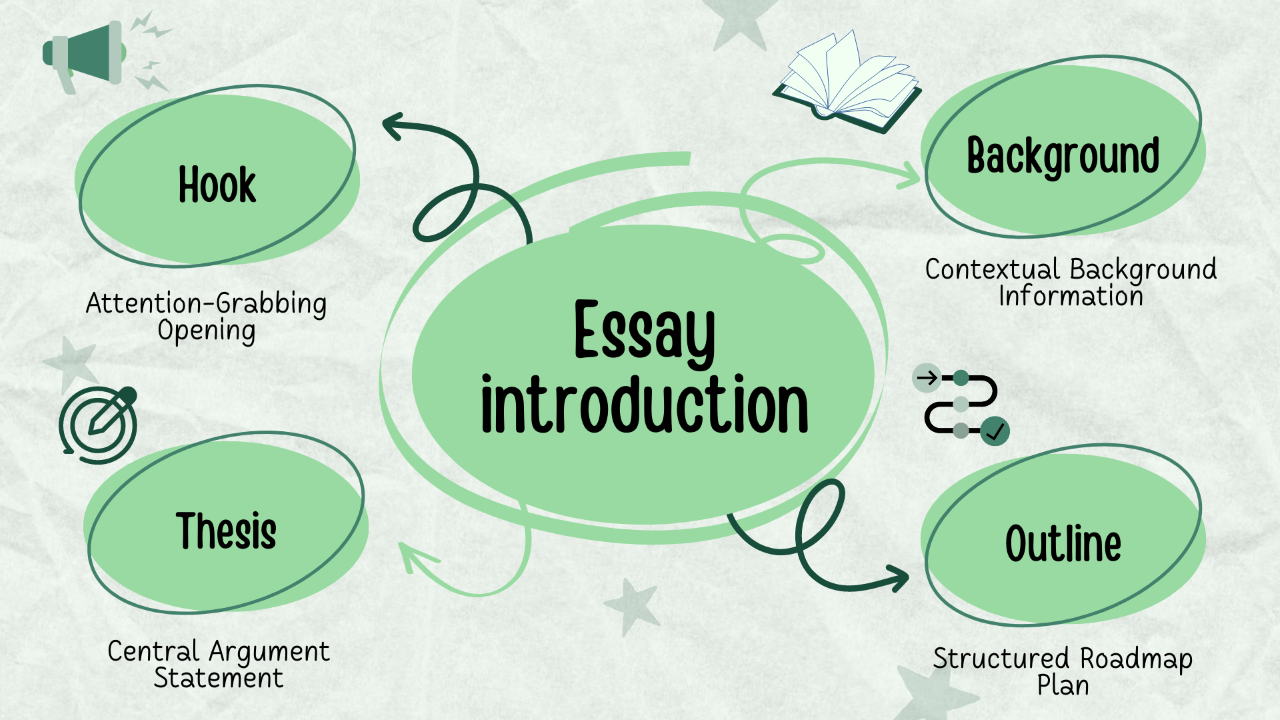
Writing Engaging Introduction Paragraphs: The Key to Excellent Essays

The introduction, also known as the opening paragraph, holds paramount significance in the process of writing an academic essay . It serves as the reader's first encounter with your essay, providing them with valuable insights into the topic and your intended message. A well-structured introduction plays a vital role in captivating the reader's attention and establishing the foundation for the entire essay. If you're searching for how to begin an essay introduction or how to write the first paragraph, this guide has your answers. Let's cover everything about writing a good introduction paragraph for your essay.
A good introduction paragraph acts as an entrypoint, captivating readers and enticing them to explore your essay further. It establishes the desired tone, introduces key ideas, presents a clear argument, and provides readers with a navigational roadmap throughout the essay. By learning the each step invloved in the process of writing a perfect introduction, you can engage your audience, establish credibility, and lay a solid foundation for a persuasive and well-written essay.
In this comprehensive guide, we will explore the four essential steps involved in formatting and writing an impressive essay introduction paragraph. We will look into the significance of various attention-grabbing hooks, the value of providing relevant context, the importance of articulating a clear thesis, and the process of outlining the key points. Moreover, we will provide you with practical tips, techniques, and examples to enhance your academic writing skills , empowering you to write powerful and engaging openings for your essays.
It is recommended that the introduction should not surpass 10-15% of the total essay length, ensuring a balanced start to your writing. It is also important to note that the process of writing an introductory paragraph is not static; it requires refinement, polishing, and adaptation to the specific format of an essay being written. Whether you're writing a narrative essay , descriptive essay , persuasive essay , expository essay or any other type of essay, the approach to writing the opening paragraphs may vary. Each essay type comes with its own set of expectations and requirements, which should be taken into consideration when writing the intro for your essay. By understanding the unique characteristics and goals of the particular type, you can tailor the introduction paragraph of your essay to effectively engage the reader and set the stage for the rest of your essay.
Table of Content
- Introducing the topic
- Question hook
- Statistic hook
- Quotation hook
- Anecdotal hook
- Statement hook
- Providing background
- Stating the thesis
- Outlining the key-points
- Example of an essay introduction
- Checklist for writing the introduction paragraph
Introducing the Topic with a Catchy Hook
One of the fundamental elements of a good introduction paragraph is capturing the reader's attention from the very beginning known as the opening sentence of your essay. This can be achieved through the use of different types of hooks. A hook is an attention-grabbing opening sentence or statement that piques the reader's curiosity and entices them to continue reading. Most often, essay hooks are constructed to generate curiosity or raise a question. However, it is important to keep in mind that the hook should be relevant and connected to the topic of your essay.
Exploring the 5 Types of Hooks for Engaging Essay Openings
Writing an engaging essay introduction is an indispensable aspect of various essay types. It holds the power to captivate your audience and ignite their curiosity. To unravel the mystery behind the art of hooking readers from the very first sentence, let's explore the five types of attention-grabbing hooks. By understanding these hooks, you will learn the art of capturing your audience's attention and setting the stage for a remarkable essay. Now, Let's explore the five types of hooks which can be used as a good starter for your essay:
1 Question Hook:
A question hook involves posing a thought-provoking question to the readers in the opening sentence of your essay. It stimulates their curiosity and encourages them to contemplate the answer, making them eager to read further into your essay.
When writing a question hook, it's crucial to choose a question that is relevant to your topic and aligns with the purpose of your essay. Consider the following tips:
- Make it thought-provoking: Formulate a question that challenges common assumptions or prompts reflection.
- Keep it concise: Ensure the question is concise and clear to avoid confusion.
- Create a connection: Relate the question to your topic in a way that captivates the reader's interest.
Now, let's create a question hook using the example topic "The Impact of Social Media on Society." A good example of a question hook to begin your opening sentence would be:
Example of question hook:
Have you ever wondered how social media has transformed society and shaped the way we communicate and interact with one another?
In this example, the question hook prompts readers to consider the influence of social media on how people perceive the world around them and how it affects their everyday experiences. This thought-provoking question sets the stage for an engaging and informative essay on the topic of the impact of social media on society.
Remember, a question hook can be a powerful way to engage your readers and set the stage for an insightful essay. However, it's important to ensure that the rest of your essay answers the question posed in the hook, providing a satisfying response for your readers.
2 Statistic Hook:
Statistic hooks involve presenting a compelling statistical fact or data to capture the reader's attention. By providing a concrete and relevant statistic, you can immediately pique the reader's interest and emphasize the significance of your essay topic.
When using statistics for opening hook sentence, consider the following tips:
- Ensure accuracy: Verify the reliability and credibility of the statistic from reputable sources. Relate it to your topic: Connect the statistic to your essay's subject matter, highlighting its relevance and relevance.
- Choose a compelling statistic: Find a statistic that is surprising, impactful, or thought-provoking to make a strong impression.
An effective statistic hook to start your essay introduction would be:
Example of statistic hook:
With over 4.2 billion active users worldwide, social media has undeniably revolutionized the way we communicate, interact, and consume information.
This statistic hook immediately captures the reader's attention by highlighting the vast scale of social media usage and its pervasive presence in our lives. It sets the stage for an essay exploring the profound impact of social media on society.
Remember, a statistic hook can be a powerful way to engage your readers and establish the importance of your essay's subject matter. Ensure that you follow up with a well-developed and insightful essay that elaborates on the implications of the statistic and provides valuable analysis.
3 Quotation Hook:
A quotation hook involves using a relevant and impactful quote to grab the reader's attention and set the tone for your essay. By selecting a compelling quote from a notable individual or a significant source, you can immediately intrigue readers and make them eager to explore your essay further.
When starting your essay opening sentence with a quotation hook, consider the following tips:
- Connect it to your topic: Explain how the quote relates to your essay's subject matter, providing context and setting up the subsequent discussion.
A good example of eye-catching quotation hook for your essay would be:

Example of quotation hook:
“Ideally we want a juror who has a high social status, because those people tend to influence other jurors when it comes to deliberations.” (Jodi Picoult, 2016, p.287)
This quotation hook captures the essence of the profound influence of social media on modern society. The quote by Jodi Picoult highlights the all-encompassing nature of social media and its pervasive impact on various aspects of our lives. It sets the stage for an engaging essay that explores the implications and consequences of this phenomenon.
A quotation hook can be a compelling way to captivate your readers and create an engaging introduction. Ensure that you follow up with a well-developed essay that elaborates on the quote's significance and offers insightful analysis or discussion.
4 Anecdotal Hook:
An anecdotal hook involves starting your essay with a short and engaging personal story or anecdote. By sharing a relatable and intriguing narrative, you can immediately draw the reader into your essay and create an emotional connection. Anecdotes are particularly effective for making your essay more relatable and humanizing the topic at hand.
When using an anecdotal hook for writing the opening sentence of your essay, keep the following tips in mind:
- Choose a relevant and captivating story: Select an anecdote that directly relates to your essay's topic and grabs the reader's attention. It should be interesting and provide context for the subsequent discussion.
- Keep it concise: Ensure that your anecdote is brief and doesn't overshadow the main points of your essay. The goal is to engage the reader, not to tell a lengthy story.
- Highlight its connection to the topic: Clearly explain how the anecdote connects to the subject matter of your essay. This will help the reader understand the relevance and significance of the story in relation to the broader theme.
By considering these tips, you can effectively use anecdotal hook to engage your readers and create a strong connection between your personal story and the larger context of your essay. A powerful anecdotal hook to begin your essay would look like this:
Example of anecdotal hook:
Imagine walking into a bustling cafe, where the aroma of freshly brewed coffee fills the air.
By writing this anecdotal hook, we transport the reader into a specific moment, evoking imagery and emotions that prompt contemplation. It lays the foundation for an essay exploring the profound influence of social media on society, inviting readers to reflect on their own experiences and consider the broader impact of digital connectivity.
An anecdotal hook adds a personal touch to your essay and helps create an immediate connection with your audience. Ensure that the subsequent essay expands upon the themes introduced in the anecdote and provides meaningful analysis or insights.
5 Statement Hook:
A statement hook involves starting your essay introduction with a bold and attention-grabbing statement that immediately captures the reader's interest. By presenting a compelling assertion or provocative statement, you can intrigue readers and compel them to continue reading to find out more.
When presenting a statement hook in your essay's opening sentence, consider the following tips:
- Choose a captivating statement: Select a statement that challenges common beliefs, presents a surprising fact, or poses a thought-provoking idea. It should be bold and impactful to engage your readers from the beginning.
- Make it concise and clear: Ensure that your statement is concise and easily understood. A clear and succinct statement will effectively convey your message without confusion.
- Connect it to your essay topic: Explain how the statement relates to your essay's subject matter and why it is significant. This will provide context and set the stage for the subsequent discussion.
By following these tips, you can write an impactful statement hook to introduce your essay. A good example of statement hook woulde be:
Example of statement hook:
Social media has transformed the very fabric of human interaction, reshaping the way we communicate, connect, and perceive the world around us.
This statement hook immediately grabs the reader's attention by asserting the profound impact of social media on society. It sets the stage for an essay that delves into the various ways social media has revolutionized communication and its implications for our lives.
A statement hook possesses the power to captivate your readers and establish the tone of your essay. However, it is crucial to follow it up with a well-developed essay that offers supporting evidence, insightful analysis, and relevant insights to substantiate the assertive statement introduced in the hook. This ensures a cohesive and persuasive essay that reinforces the initial impact and engages readers throughout.
Enhancing Background Information and Context Setting:
After captivating the reader's attention with an intriguing opening statement, it is crucial to provide the necessary background information to establish the context for your essay topic. When providing the context, emphasize the significance and relevance of the subject matter. Offer a concise overview of why the topic is important, highlighting its connections to broader issues, ongoing debates, or current events. Consider discussing its historical development, societal implications, or other relevant factors. Additionally, define key terms associated with your topic. By setting the context in this manner, you provide the reader with a glimpse into the larger framework of your essay, facilitating their understanding of the topic and anticipation of the arguments and insights to be presented throughout your essay.
To provide a solid foundation for the ensuing discussion, it is important to establish the necessary context and background surrounding the topic at hand. Here is an example of providing a context for your essay on the topic of "The Impact of Social Media on Society":
Example of context:
With platforms like Facebook, Twitter, and Instagram at our fingertips, social media has enabled people from diverse backgrounds to connect and engage on a global scale. The rapid advancement of technology and the widespread availability of smartphones have made social media accessible to a vast population, influencing various aspects of society.
Stating the Thesis or Main Argument
The thesis statement is a crucial component of your essay introduction as it encapsulates the main idea or argument you want to present. It serves as a concise and clear statement that sets the direction for your entire essay. Crafting an effective thesis statement requires careful consideration and refinement.
To create an effective thesis statement, it is important to narrow down the argument you want to make. Begin by brainstorming and listing out different versions of your argument. Explore various angles and perspectives until you find the most compelling and persuasive way to present your main idea.
One useful tip for creating your thesis statement is to ensure that you directly answer the question or prompt. This helps to keep your argument focused and relevant. By directly addressing the question, you provide a clear sense of purpose and direction for your essay.
Additionally, various prewriting strategies such as brainstorming, outlining, and researching can greatly assist in establishing your thesis statement during the planning process of your essay. These activities help you gather and organize your thoughts, allowing you to identify key points and supporting evidence that will shape your thesis statement.
A well-developed thesis statement not only conveys your main argument but also provides a roadmap for the rest of your essay. It helps you structure your essay and guides your readers in understanding the purpose and scope of your work. By investing time and effort in developing a strong thesis statement, you lay a solid foundation for a compelling and cohesive essay.
Example of thesis statement:
Social media has profoundly transformed society, impacting communication, culture, politics, personal well-being, and our fundamental identities.
Mapping the Path: Providing an Outline of the Key Points in Your Essay
In addition to stating the thesis, providing background information, and grabbing reader's attention with an engaging opening hook statement, it is now beneficial to outline the key points of your essay that will be discussed in the rest of the parts of your essay's main body. This serves as a roadmap for the reader, offering a clear overview of the essay's structure and helping them follow along with the argument.
Providing a clear roadmap offers several advantages. Firstly, it allows the reader to anticipate the key ideas that will be covered in the essay. This creates a sense of coherence and helps them understand the logical progression of your argument. By presenting a concise overview of the key points, you help the reader grasp the overall organization of your essay and the central themes you will explore.
When providing an outline, it is important to be concise and clear. Briefly mention the key ideas or arguments that will be discussed in the essay, ensuring that they are directly related to the thesis statement.
Here's one possible example of outlining the key-points in your essay introduction:
Example of essay outline:
In this paper, we will explore the multifaceted impact of social media on society. Firstly, we will examine its influence on interpersonal relationships and community building. Secondly, we will analyze its impact on information dissemination and consumption. Finally, we will discuss the role of social media in shaping cultural norms and trends.
By providing this outline, you not only give the reader a clear structure to follow but also demonstrate your essay's organization and coherence. This approach enhances the overall readability and comprehension of your essay, making it easier for the reader to engage with your arguments.
Example: Essay Introduction Paragraph
Here's an example of the introduction paragraph. Discover the different sections highlighted in distinct colors and hover over or click on each one to unveil a comprehensive description of the essay's introduction writing process.
Example of essay introduction
With over 4.2 billion active users worldwide, social media has undeniably revolutionized the way we communicate, interact, and consume information. In today's interconnected world, social media has become an integral part of our daily lives, transforming the way we communicate, share information, and interact with others. It has revolutionized the digital landscape, captivating millions of users worldwide. Social media has profoundly transformed society, impacting communication, culture, politics, personal well-being, and our fundamental identities. In this paper, we will explore the multifaceted impact of social media on society. Firstly, we will examine its influence on interpersonal relationships and community building. Secondly, we will analyze its impact on information dissemination and consumption. Finally, we will discuss the role of social media in shaping cultural norms and trends.
Checklist for Writing an Effective Essay Introduction
Random posts.
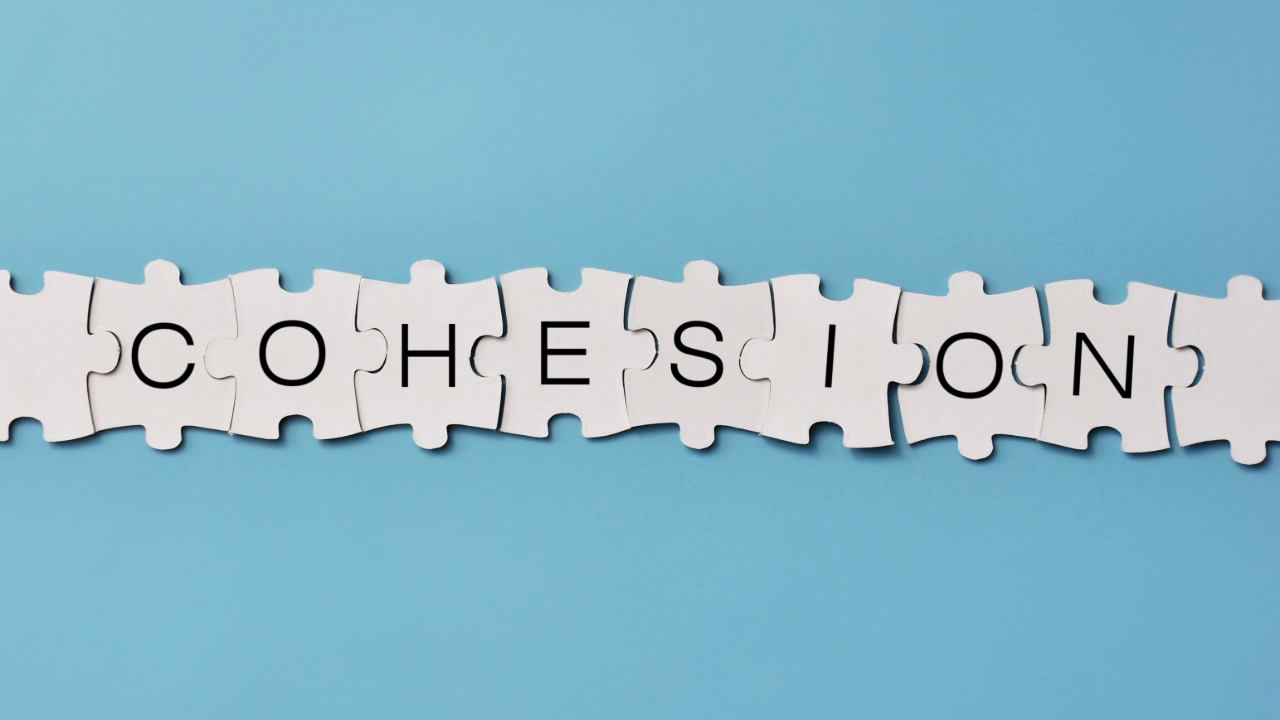
Coherence and Cohesion: Essential Skills for Effective Essay Writing
May 12, 2024
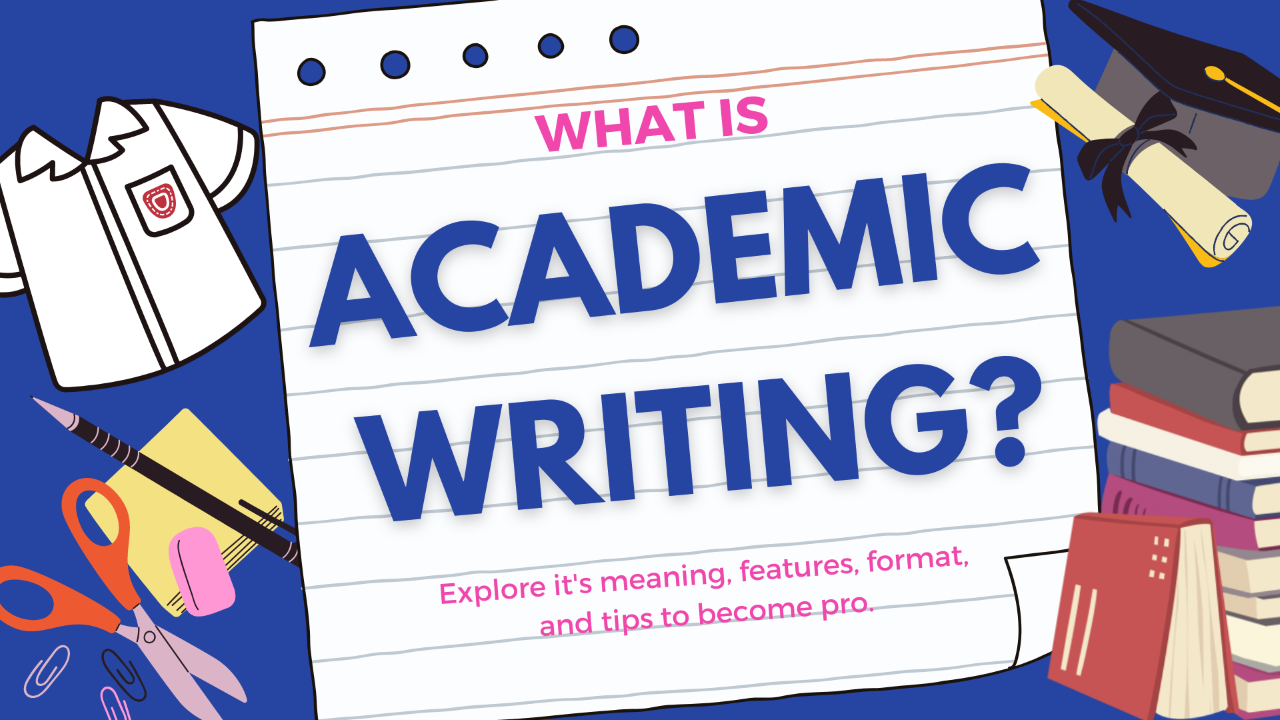
What is Academic Writing Style? Definition, Features, & Format
Mar 23, 2024
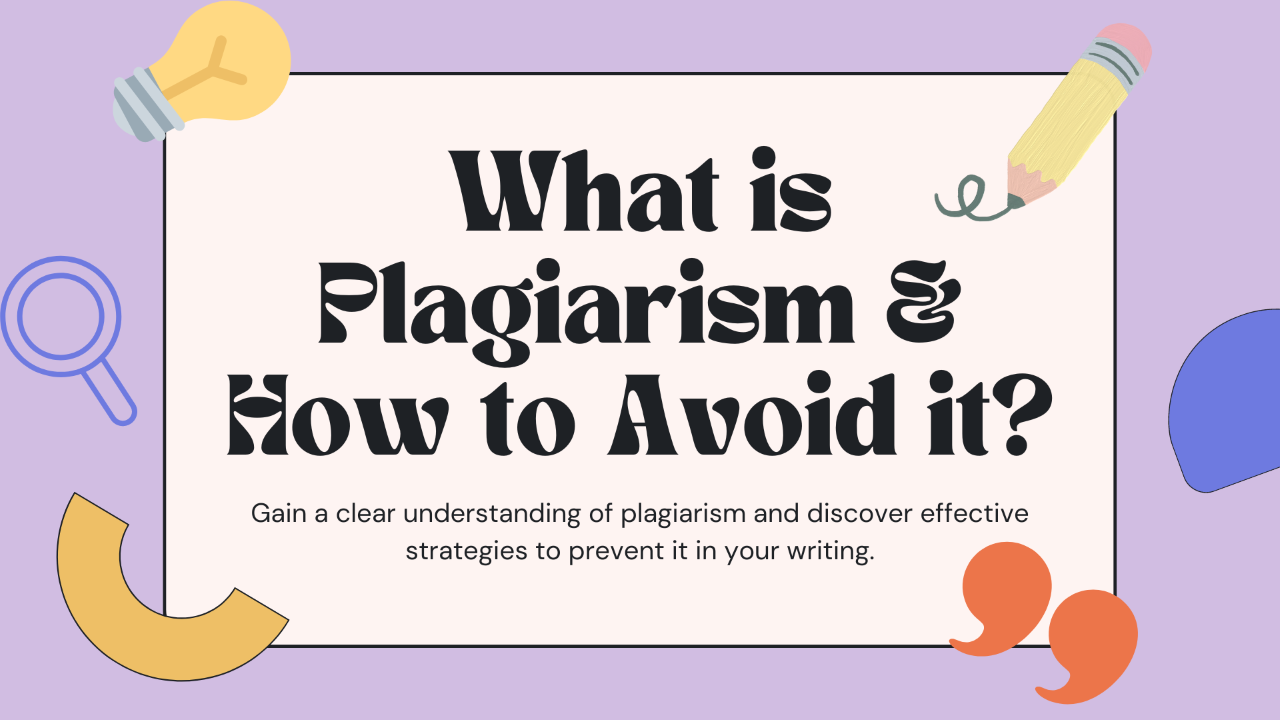
What is Plagiarism and How to Avoid it? Tips, Types & Examples
Jan 15, 2024
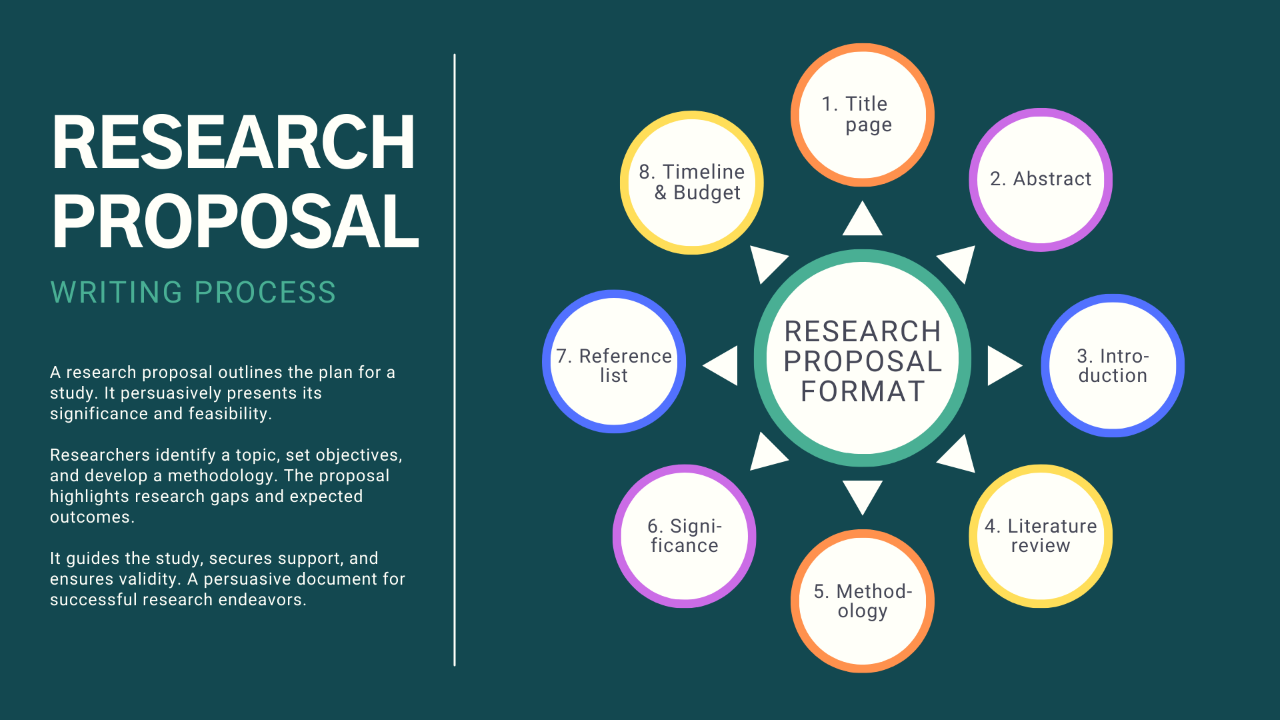
A Step-by-Step Guide to Writing a Research Proposal: Purpose, Topics, Format & Significance
Feb 15, 2024
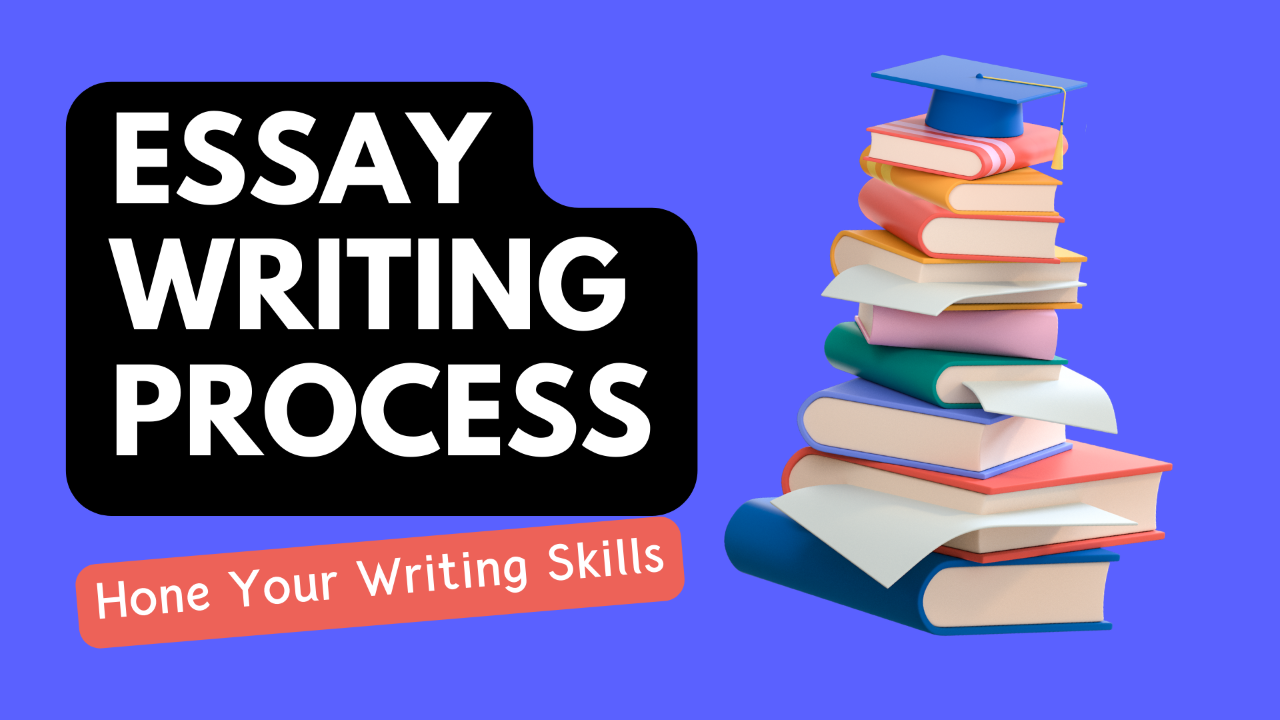
How to Write an Excellent Academic Essay From Start to Finish: Tips & Examples
Apr 02, 2024
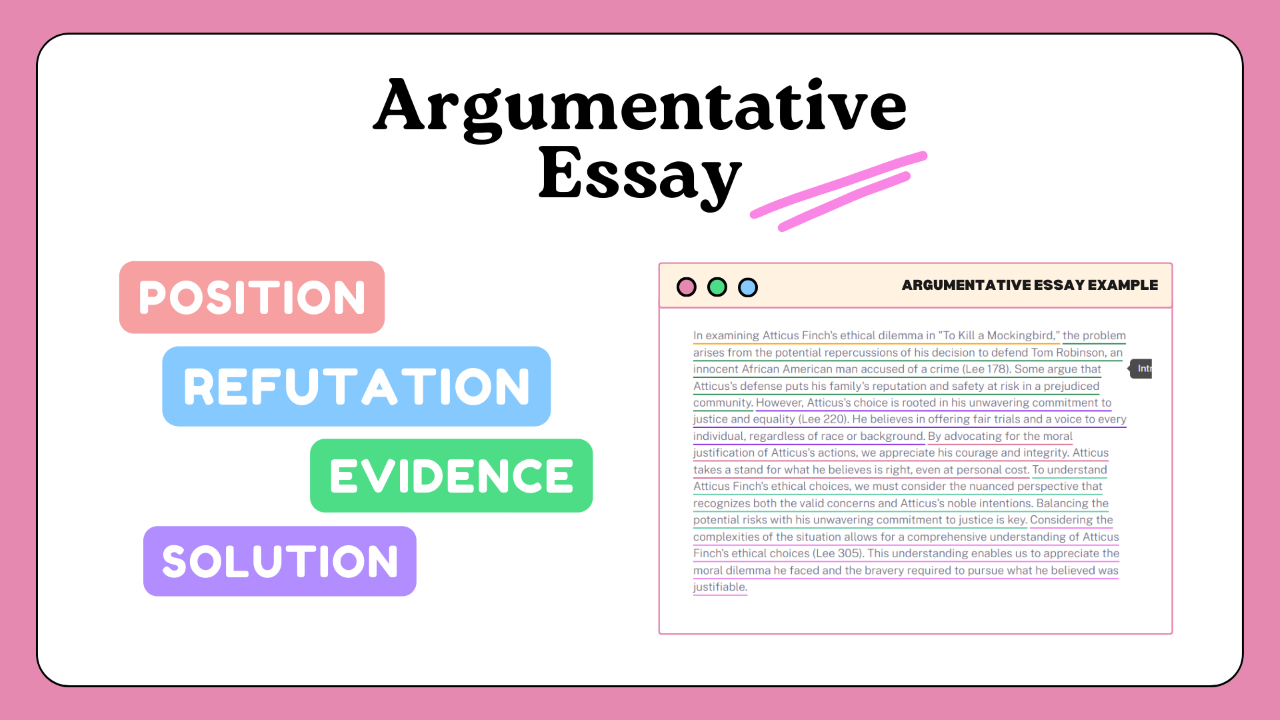
Harnessing Your Persuasive Power: How to Excel in Argumentative Essay Writing
Mar 27, 2024
Free Sample Essays & Papers
Download free PDF examples of essays and papers in various subjects, all with different citation styles! Get inspired, conquer writer's block, and find the perfect format for your next assignment. Click to download now!

IMAGES
VIDEO
COMMENTS
The main goals of an introduction are to: Catch your reader’s attention. Give background on your topic. Present your thesis statement —the central point of your essay. This introduction example is taken from our interactive essay example on the history of Braille.
Learn how to write an essay introduction that captures readers' attention and sets the stage for your argument or discussion. Discover tips and techniques on how to create a hook, provide a thesis statement, and outline …
Learn how to write an engaging essay introduction that hooks readers, provides background, and sets up your thesis statement. View examples to help get you started
We explain a bit about when and how to use them, and then give specific examples of sentence starters you can use in your writing, divided into categories for quick reference like …
An introduction for an essay or research paper is the first paragraph, which explains the topic and prepares the reader for the rest… You have fifteen seconds or less to …
Take a look at these examples of essay openings that use questions to hook readers: “How many times have you been late to class because you couldn’t find parking? You’re not alone—our campus is in …
Learn how to write engaging introductory paragraphs for an essay—from opening sentence to thesis and outline. Explore examples and tips to write perfect introduction paragraphs with this comprehensive guide.